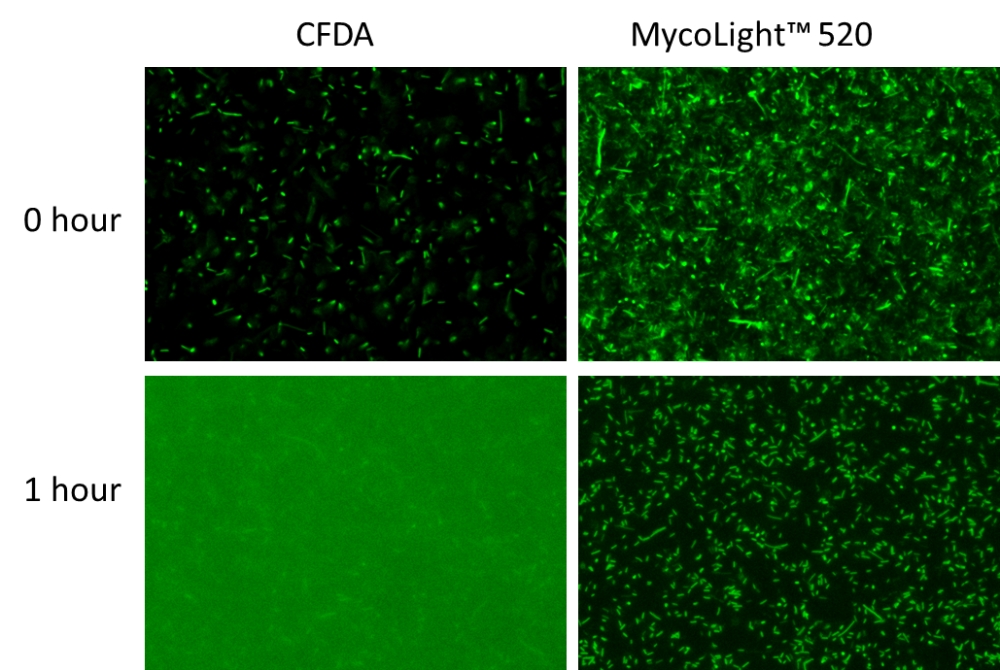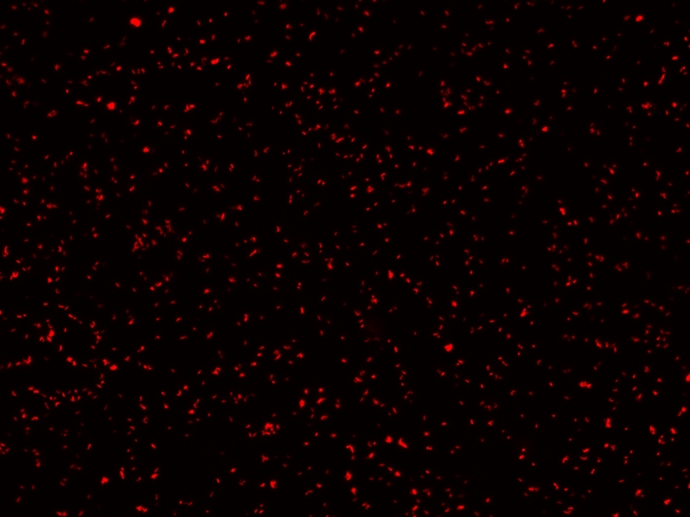Gram Staining
Traditional Fixed Cell Gram Stain vs Live Cell Gram Stain
The traditional five-step process results in two differently-colored fixed bacterial cells, depending on their cell wall composition. Gram-positive will appear dark purple (from the initial crystal violet stain) and gram-negative will be a pink to red color from the final counter-stain of safranin. Aside from a wider catalog of possible dyes available, the most definitive difference between traditional and modernized Gram staining is that the traditional methodology can only be done on fixed cells, eliminating the possibility of further characterization. Updated Gram staining techniques can often be done on live cells, allowing researchers more autonomy with experimental design and goals.
Gram Staining Kits
Traditional Gram staining is an inexpensive but labor-intensive 5-step staining process. Modern techniques and all-inclusive kits are more efficient and may be suited to time-sensitive experiments or procedures requiring minimization of possible human error. The MycoLight™ Kit series covers a wide range of frequent experimental needs, optimized for fluorescence microscope, microplate assays, Flow Cytometry or all of the above instrumental platforms. The series displays excellent background/signal ratio and brightness as well as minimal cytoxicity, allowing for normal bacterial growth and proliferation of target colonies.

Figure 1. Fluorescence images of E.coli stained with CFDA or MycoLight™ Live Bacteria Fluorescence Imaging Kit. CFDA requires washing steps before imaging to minimize background, while no washing is needed using this kit (Cat#22409). The staining efficiency of MycoLight™ 520 is much higher than CFDA as more bacteria show green fluorescence. The signal of MycoLight™ 520 remains in cells after 1 hour of staining while CFDA leaks out readily. Same amount of bacteria were presented in each sample and fluorescence images were taken under the same exposure time.
Table 1. MycoLight™ Bacterial Kits For Gram Staining Kits
| Cat# | Product Name | Unit Size | Ex | Em |
| 22400 | MycoLight™ Bacterial Viability Assay Kit | 200 Tests | 484 | 520 & 630 |
| 22401 | MycoLight™ Ratiometric Bacterial Membrane Potential Kit *Red/Green Fluorescence* | 200 Tests | 484 | 520 & 630 |
| 22405 | MycoLight™ Fluorimetric CTC Live Bacteria Quantification Kit | 100 Tests | 450 | 630 |
| 22407 | MycoLight™ Flow Cytometric Live Bacteria Assay Kit | 100 Tests | 496 | 524 |
| 22409 | MycoLight™ Live Bacteria Fluorescence Imaging Kit | 100 Tests | 496 | 524 |
| 22411 | MycoLight™ Fluorescence Live/Dead Bacterial Imaging Kit | 100 Tests | 488/540 | 530/620 |
| 22413 | MycoLight™ Rapid Fluorescence Bacterial Gram Stain Kit | 100 Tests | 488/540 | 530/620 |
| 22415 | MycoLight™ Rapid Fluorescence Gram-Positive Bacteria Staining Kit | 100 Tests | 650 | 669 |
Gram Staining Dyes
With the development of improved dyes, a wide spectrum is available, allowing for Gram-staining to be included as part of multiparameter analysis of bacterial cells. Inexpensive selections like Hexidium Iodide and others are popular choices. For experiments requiring specificity as well as sensitivity, the MycoLight™ dye series are designed for low initial fluorescence, providing exceptional brightness only after nucleic acid binding. MycoLight™ Green JJ98 and JJ99 stain both Gram-positive and Gram-negative bacteria, and MycoLight™ Red JJ94 preferentially labels Gram-positive bacteria.

Figure 2. Rhodococcus qingshengii was stained with 2.5 μM of MycoLight™ Red JJ94 for 20 minutes. Image was taken by Keyence florescent microscope with Cy5 filter set.